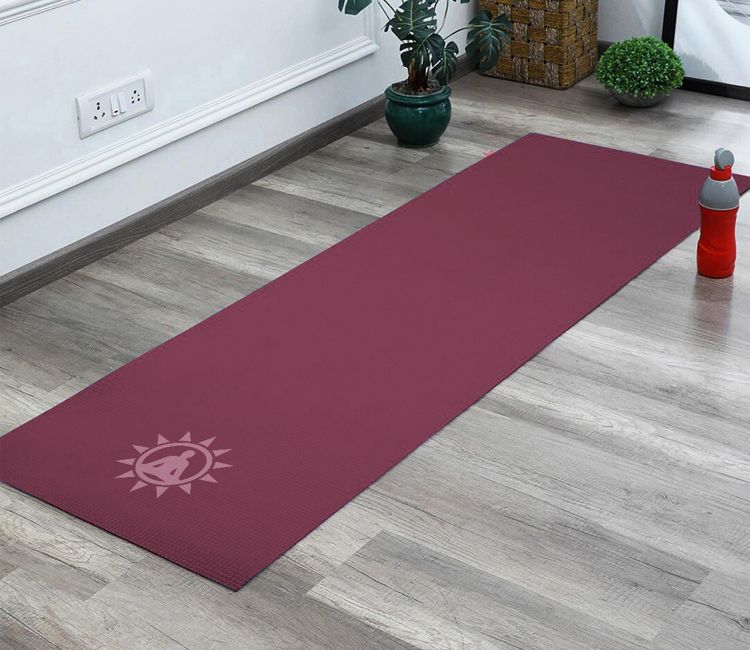Choosing the right yoga mat can significantly enhance your practice, and one of the most critical factors to consider is its thickness. Whether you're a seasoned yogi or just starting, understanding the different thickness levels can help you find a mat that provides the perfect balance of support, comfort, and stability. In this guide, we'll break down various yoga mat thicknesses and how to select the best one for your specific needs.
1. Understanding Yoga Mat Thickness Options
Yoga mats come in a range of thicknesses, typically measured in millimeters (mm). Here are the most common categories:
- Thin Mats (1-3 mm): These mats are also known as travel mats. They are lightweight, highly portable, and easy to fold, making them ideal for yogis on the go. They offer minimal cushioning but provide a strong connection to the ground, which is great for stability in standing poses.
- Standard Mats (4-5 mm): The most popular thickness, standard mats offer a balanced blend of cushioning and stability. They are suitable for a wide range of yoga styles, from Hatha and Vinyasa to Ashtanga and Power Yoga. The standard thickness provides ample support for joints while still allowing a firm grip on the floor.
- Thick Mats (6-8 mm): These mats are designed for those who need extra padding, such as people with sensitive joints or those who practice slower styles of yoga like Yin or Restorative Yoga. While they offer more comfort, thick mats can sometimes make it harder to maintain balance in certain poses.
- Extra-Thick Mats (10 mm and above): Extra-thick mats are best suited for Pilates or exercises that require a lot of cushioning. They provide maximum comfort and protection for the knees and spine but might not be ideal for balance-focused yoga practices.
2. How to Choose the Right Thickness for Your Practice
The right thickness for your yoga mat depends on several factors, including your experience level, preferred yoga style, and individual comfort needs. Here’s a closer look at how these elements can influence your decision:
- Experience Level: Beginners might benefit from a standard mat (4-5 mm) because it provides a balance of comfort and stability, which is ideal when learning new poses. Advanced practitioners may prefer thinner mats for a closer feel to the ground and better stability during complex postures.
- Yoga Style: If you practice dynamic styles like Vinyasa or Ashtanga, a thinner mat (3-5 mm) can enhance stability and help with balance. For slower practices like Yin Yoga or those with deep stretching, a thicker mat (6-8 mm) offers the necessary comfort for prolonged poses.
- Joint Sensitivity: People with sensitive knees, wrists, or other joints should consider mats in the thicker range (6 mm and above). The extra cushioning can reduce discomfort and provide a more enjoyable experience during floor-based poses.
3. Pros and Cons of Different Yoga Mat Thicknesses
To help you decide, here’s a quick breakdown of the pros and cons of each thickness range:
- Thin Mats (1-3 mm):
- Pros: Lightweight, portable, great for travel, enhanced stability.
- Cons: Limited cushioning, less joint support.
- Standard Mats (4-5 mm):
- Pros: Versatile, balanced support, suitable for most yoga styles.
- Cons: Might lack enough padding for people with joint issues.
- Thick Mats (6-8 mm):
- Pros: Excellent cushioning for sensitive joints, ideal for restorative yoga.
- Cons: Can be bulky and reduce stability in balance poses.
- Extra-Thick Mats (10 mm+):
- Pros: Maximum comfort, perfect for Pilates or floor exercises.
- Cons: Heavy, challenging to balance on, not suitable for dynamic yoga.
4. Final Thoughts
Choosing the right yoga mat thickness is a personal decision that depends on your comfort, style of practice, and mobility needs. If you're unsure, a standard 4-5 mm mat is a safe starting point for most yogis. Over time, you can experiment with different thicknesses to find what suits your practice best.
Investing in the right yoga mat will not only make your sessions more comfortable but also help you progress in your practice with greater ease. So, consider your needs carefully and select a mat that enhances your overall yoga experience.





Comments